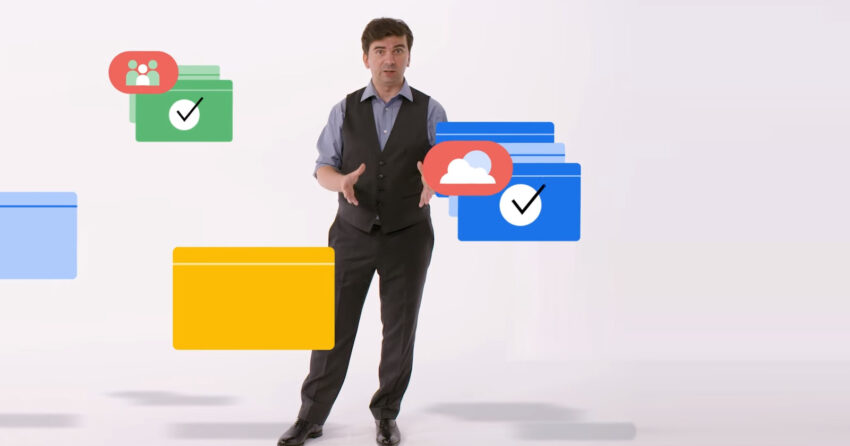In a Google Search Central video Google’s Gary Illyes defined a part of webpage indexing that includes choosing canonicals, explaining what a canonical means to Google, a thumbnail rationalization of webpage alerts, he mentions the centerpiece of a web page and tells what it does with the duplicates which suggests a brand new mind-set about them.
What Is A Canonical Webpage?
There are a number of methods of contemplating the what canonical means, the writer and the search engine optimisation’s viewpoint from our facet of the search field and what canonical means from Google’s facet.
Publishers determine what they really feel is the “authentic” webpage and SEOs conception of canonicals is about selecting the “strongest” model of a webpage for rating functions.
Canonicalization for Google is a completely totally different factor from what publishers and SEOs assume it’s so it’s good to listen to it from a Googler like Gary Illyes.
Google’s official documentation about canonicalization makes use of the phrase deduplication to reference the method of selecting a canonical and lists 5 typical causes for why a web site might need duplicate pages.
5 Causes For Duplicate Pages
- “Area variants: for instance, a bit of content material for the USA and the UK, accessible from totally different URLs, however primarily the identical content material in the identical language
- Machine variants: for instance, a web page with each a cellular and a desktop model
- Protocol variants: for instance, the HTTP and HTTPS variations of a web site
- Website capabilities: for instance, the outcomes of sorting and filtering capabilities of a class web page
- Unintentional variants: for instance, the demo model of the location is by accident left accessible to crawlers”
Canonicals may be thought of in three other ways and there are no less than 5 causes for duplicate pages.
Gary describes yet one more method to consider canonicals.
Alerts Are Used For Selecting Canonicals
Ilyes shares yet one more definition of a canonical, this time from the indexing viewpoint, and talks concerning the alerts which are used for choosing canonicals.
Gary explains:
“Google determines if the web page is a replica of one other already identified web page and which model needs to be stored within the index, the canonical model.
However on this context, the canonical model is the web page from a gaggle of duplicate pages that greatest represents the group in line with the alerts we’ve collected about every model.”
Gary stops to elucidate duplicate clustering after which returns to speaking about alerts a short time later.
He continued:
“For probably the most half, solely canonical pages seem in Search outcomes. However how do we all know which web page is canonical?
So as soon as Google has the content material of your web page, or extra particularly the principle content material or centerpiece of a web page, it is going to group it with a number of pages that includes comparable content material, if any. That is duplicate clustering.”
Simply wish to cease right here to notice that Gary refers back to the fundamental content material because the “centerpiece of a web page” which is fascinating as a result of there’s an idea launched by Google’s Martin Splitt known as the Centerpiece Annotation. He didn’t actually clarify what the Centerpiece Annotation is however this bit that Gary shared helps.
The next is the a part of the video the place Gary talks about what alerts really are.
Illyes explains what “alerts” are:
“Then it compares a handful of alerts it has already calculated for every web page to pick a canonical model.
Alerts are items of knowledge that the search engine collects about pages and web sites, that are used for additional processing.
Some alerts are very simple, similar to web site proprietor annotations in HTML like rel=”canonical”, whereas others, just like the significance of a person web page on the web, are much less simple.”
Duplicate Clusters Have One Canonical
Gary subsequent explains that one web page is chosen to signify the canonical for every cluster of duplicate pages within the search outcomes. Each cluster of duplicates has one canonical.
He continues:
“Every of the duplicate clusters may have a single model of the content material chosen as canonical.
This model will signify the content material in Search outcomes for all the opposite variations.
The opposite variations within the cluster turn out to be alternate variations which may be served in numerous contexts, like if the person is trying to find a really particular web page from the cluster.”
Alternate Variations Of Webpages
That final half is actually fascinating and is necessary to think about as a result of it may be useful for having the ability to rank for a number of variations of a key phrase, significantly for ecommerce webpages.
Generally the content material administration system (CMS) creates duplicate webpages to account for variations of a product like the scale or colour of a product which then can affect the outline. These variations may be chosen by Google to rank within the search outcomes when that variant web page extra carefully serves as a match for a search question.
That is necessary to consider as a result of it may be tempting to redirect noindex variant webpages to maintain them out of the search index out of concern of the (non-existent) key phrase cannibalization drawback. Including a noindex to pages which are variants of 1 web page can backfire as a result of there are eventualities the place these variant pages are the very best ones to rank for a extra nuanced search question that incorporates colours, sizes or model numbers which are totally different than on the canonical web page.
High Takeaways About Canonicals (And Extra) To Keep in mind
There may be a variety of info packed in Gary’s dialogue of canonicals, together with some facet subjects about the principle content material.
Listed below are seven takeaways to think about:
- The principle content material is known as the Centerpiece
- Google calculates a “handful of alerts” for every web page it discovers.
- Alerts are information which are used for “additional processing” after webpages are found.
- Some alerts are in charge of the writer, like hints (and presumably directives). The trace that Illyes talked about is the the rel=canonical hyperlink attribute.
- Different alerts are outdoors of the management of the writer, just like the significance of the web page within the context of the Web.
- Some duplicate pages can function alternate variations
- Alternate variations of webpages can nonetheless rank and are helpful for Google (and the writer) for rating functions.
Watch the Search Central Episode about indexing:
How Google Search indexes pages
Featured picture from Google video/altered by creator

